Abstract
Four experiments, each using the same six pigeons, investigated the effects of varying component durations and component reinforcement rates in multiple variable-interval schedules. Experiment 1 used unequal component durations in which one component was five times the duration of the other, and the shorter component was varied over conditions from 120 seconds to 5 seconds. The schedules were varied over five values for each pair of component durations. Sensitivity to reinforcement rate changes was the same at all component durations. In Experiment 2, both component durations were 5 seconds, and the schedules were again varied using both one and two response keys. Sensitivity to reinforcement was not different from the values found in Experiment 1. In Experiment 3, various manipulations, including body-weight changes, reinforcer duration changes, blackouts, hopper lights correlated with keylights, and overall reinforcement rate changes were carried out. No reliable increase in reinforcement sensitivity resulted from any manipulation. Finally, in Experiment 4, reinforcement rates in the two components were kept constant and unequal, and the component durations were varied. Shorter components produced significantly increased response rates normally in the higher reinforcement rate component, but schedule reversals at short component durations eliminated the response rate increases. The effects of component duration on multiple schedule performance cannot be interpreted as changing sensitivity to reinforcement nor to changing bias.
Keywords: multiple schedules, component duration, reinforcement rate, reinforcement sensitivity, pecking, pigeons
Full text
PDF


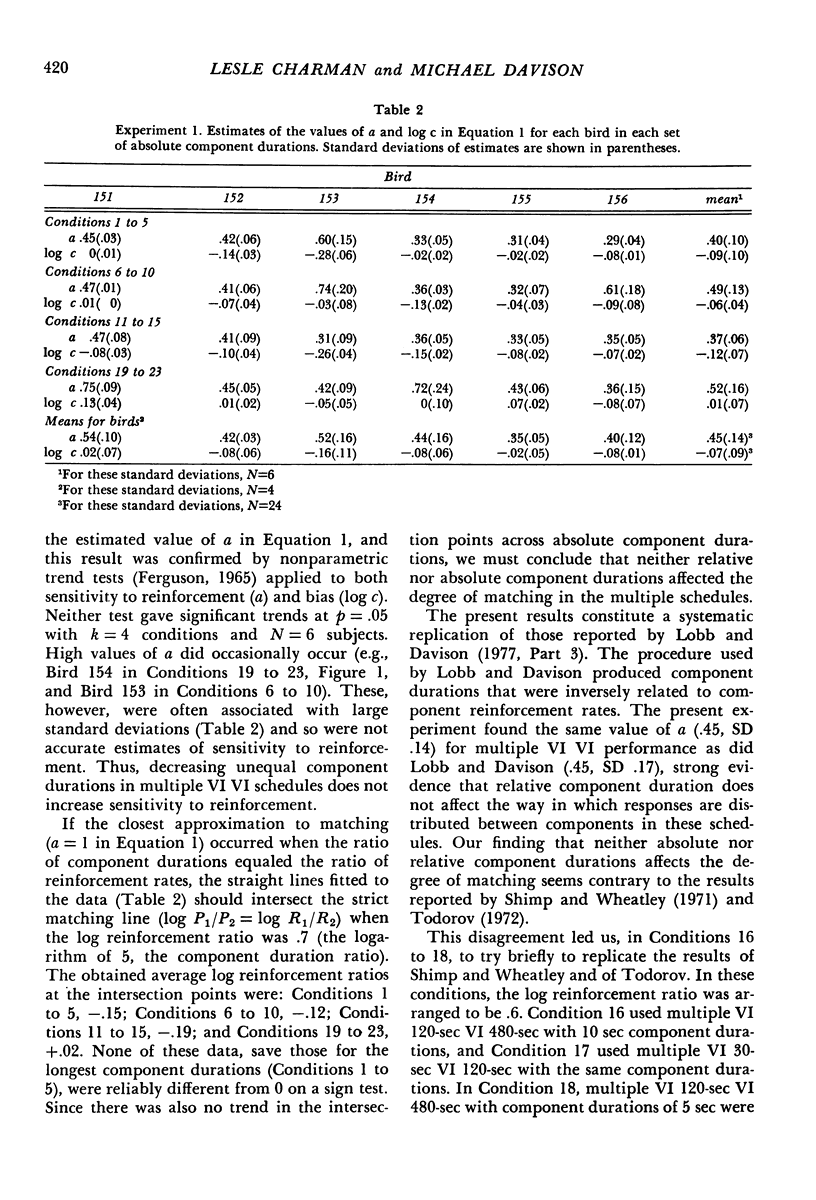
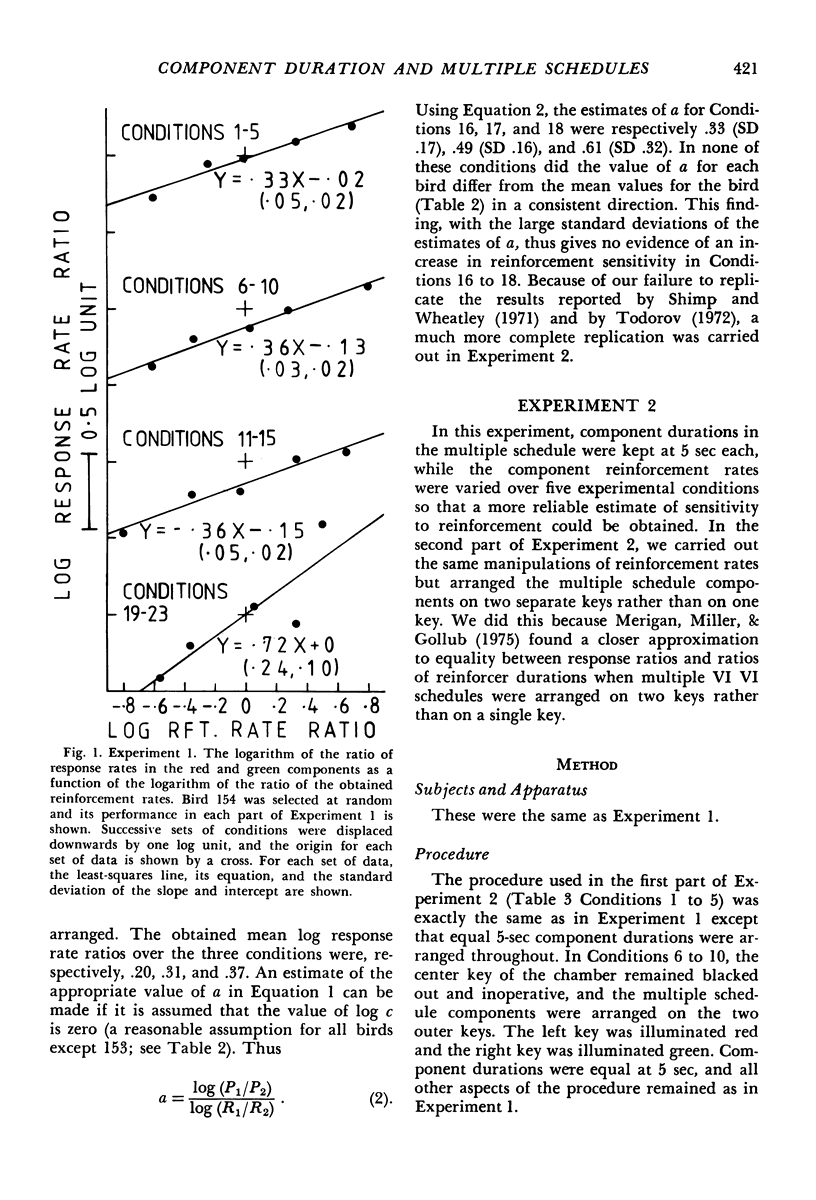

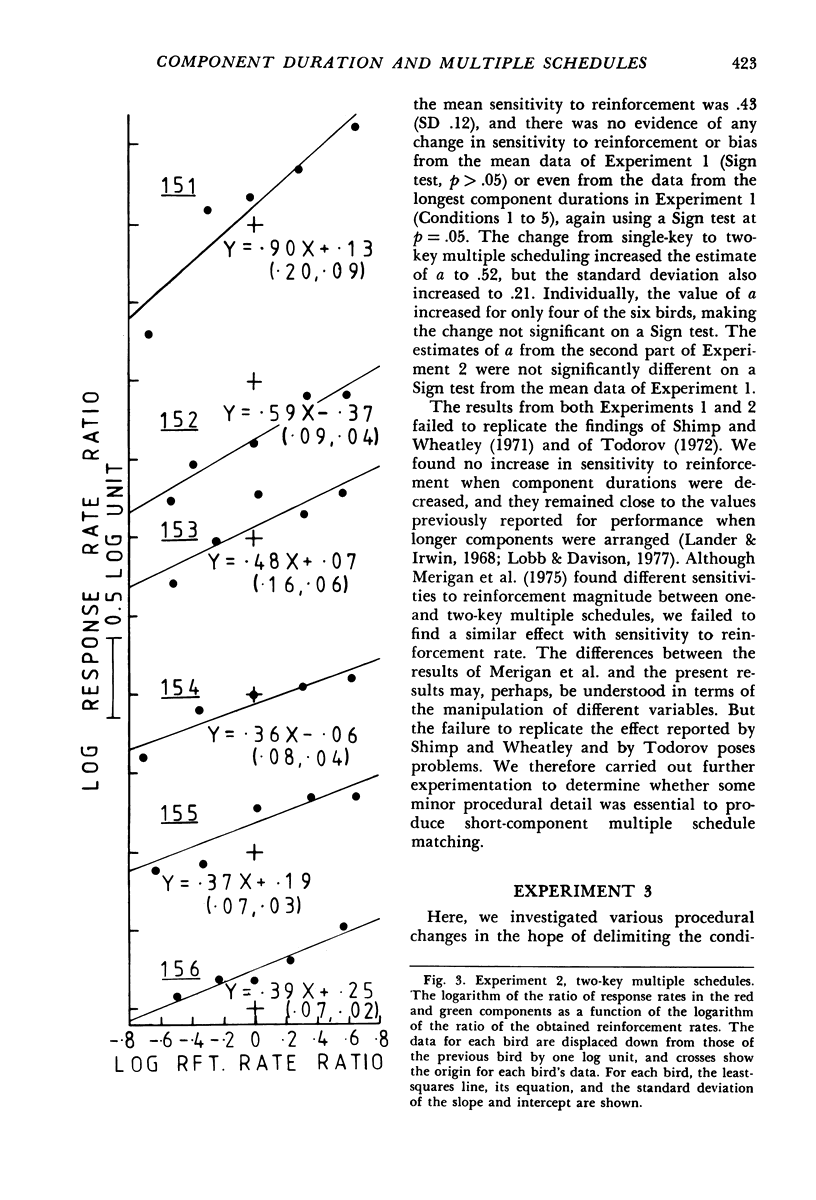
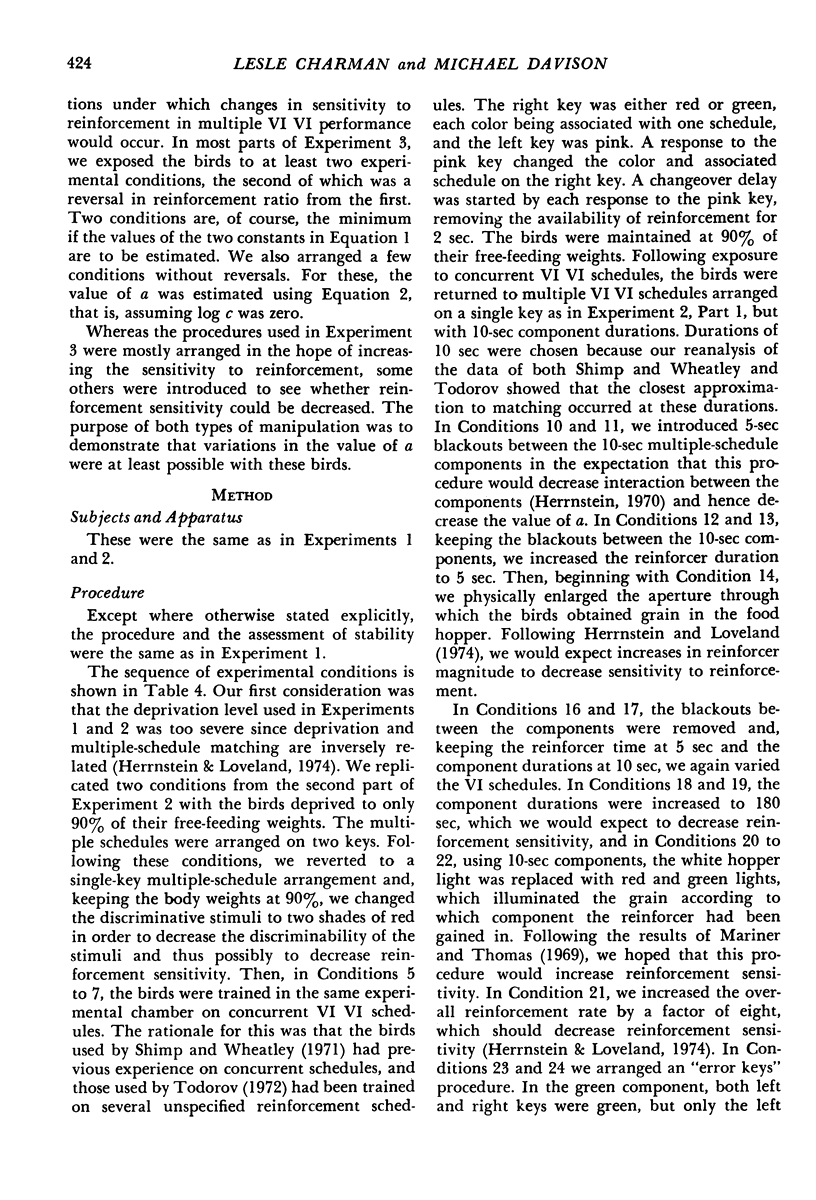

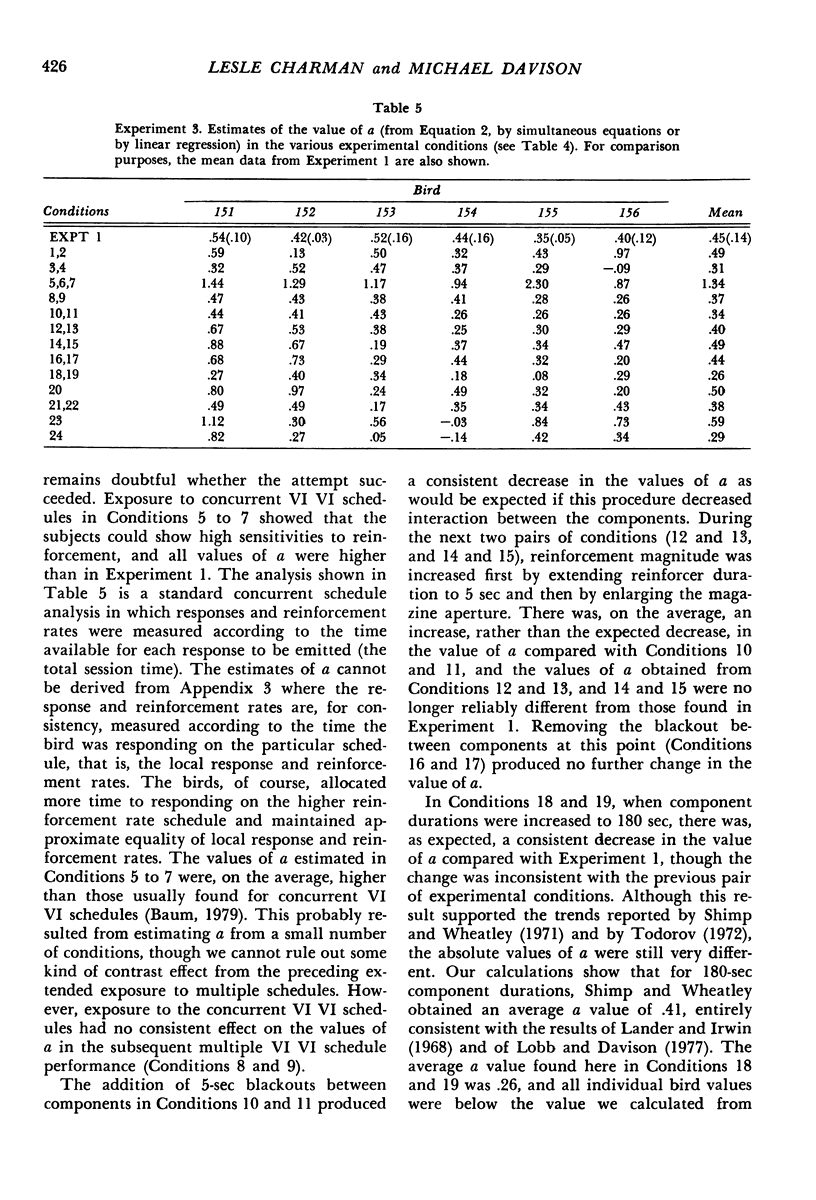


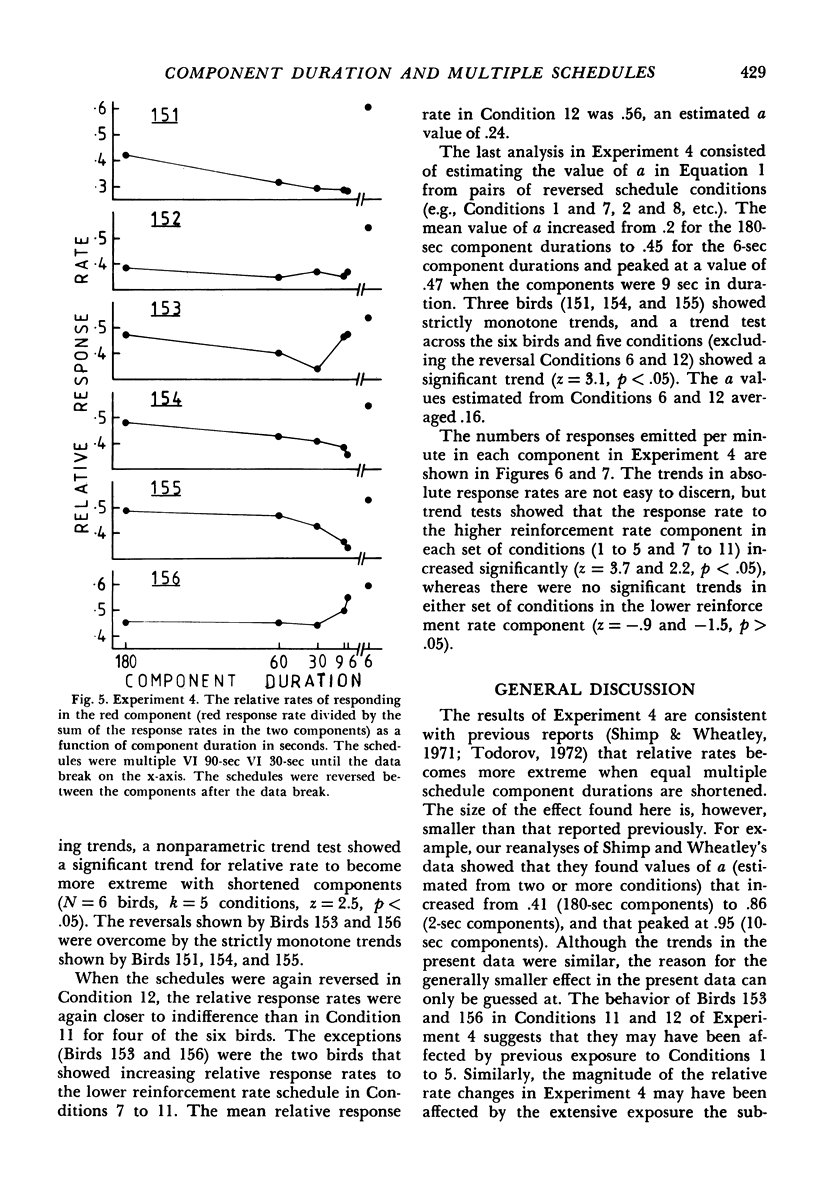

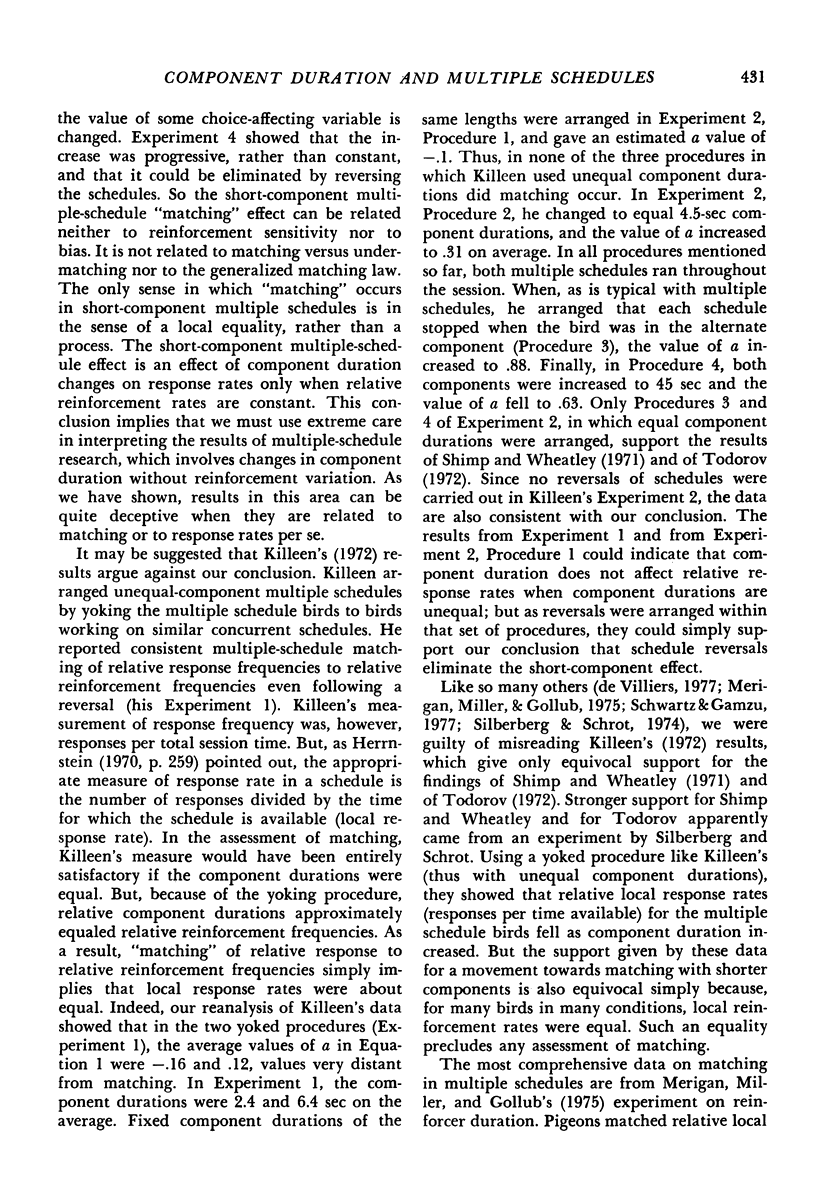
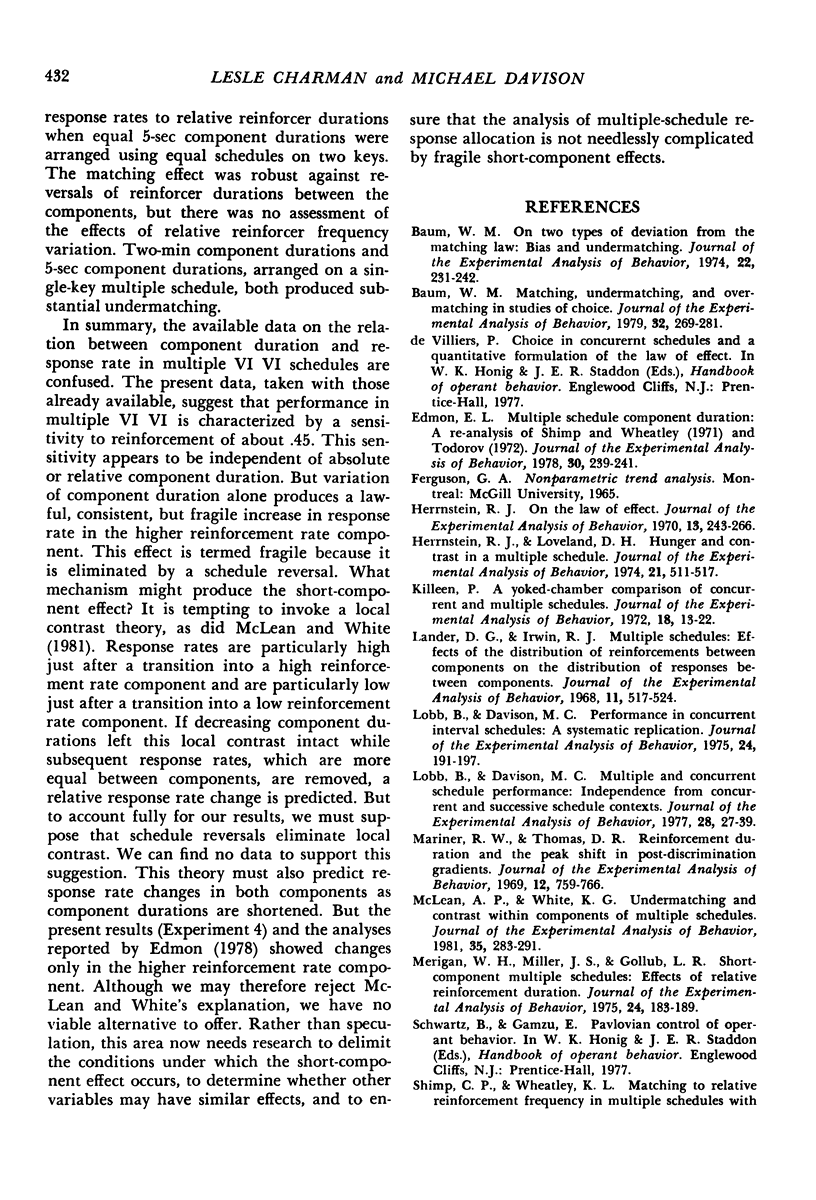

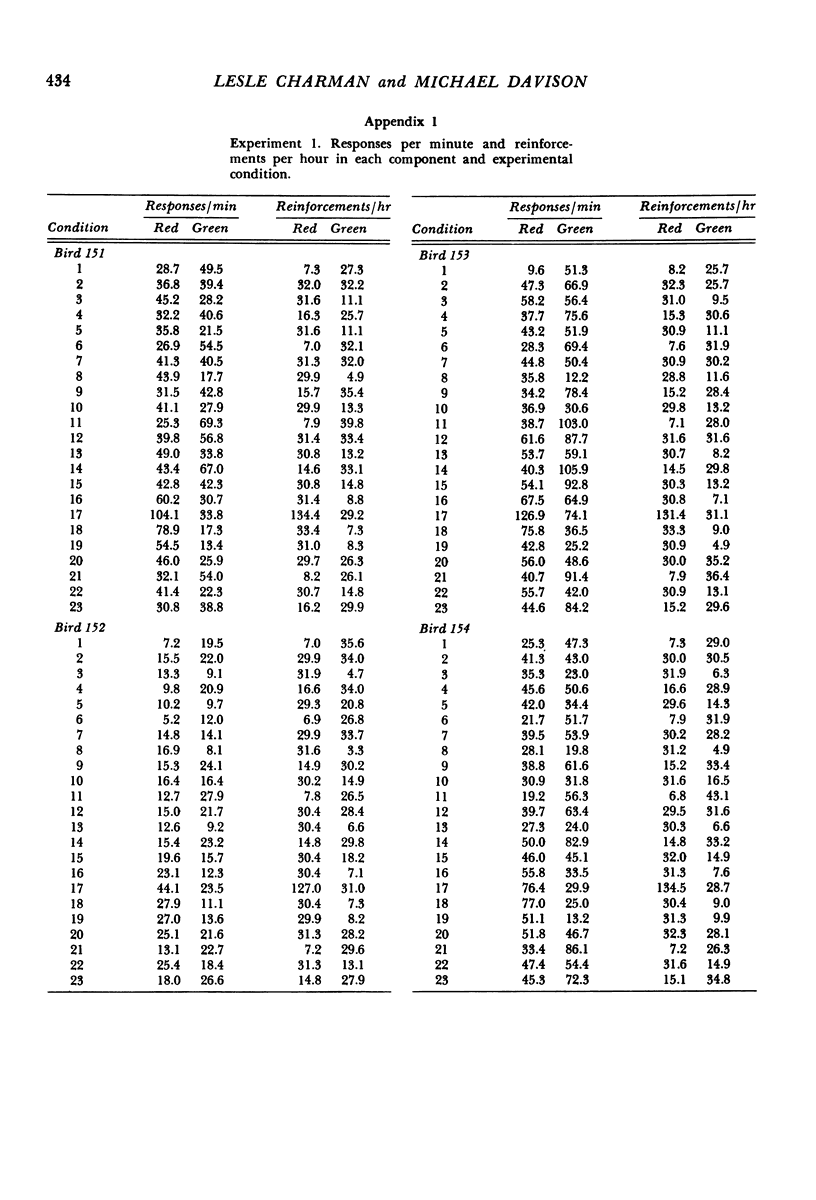
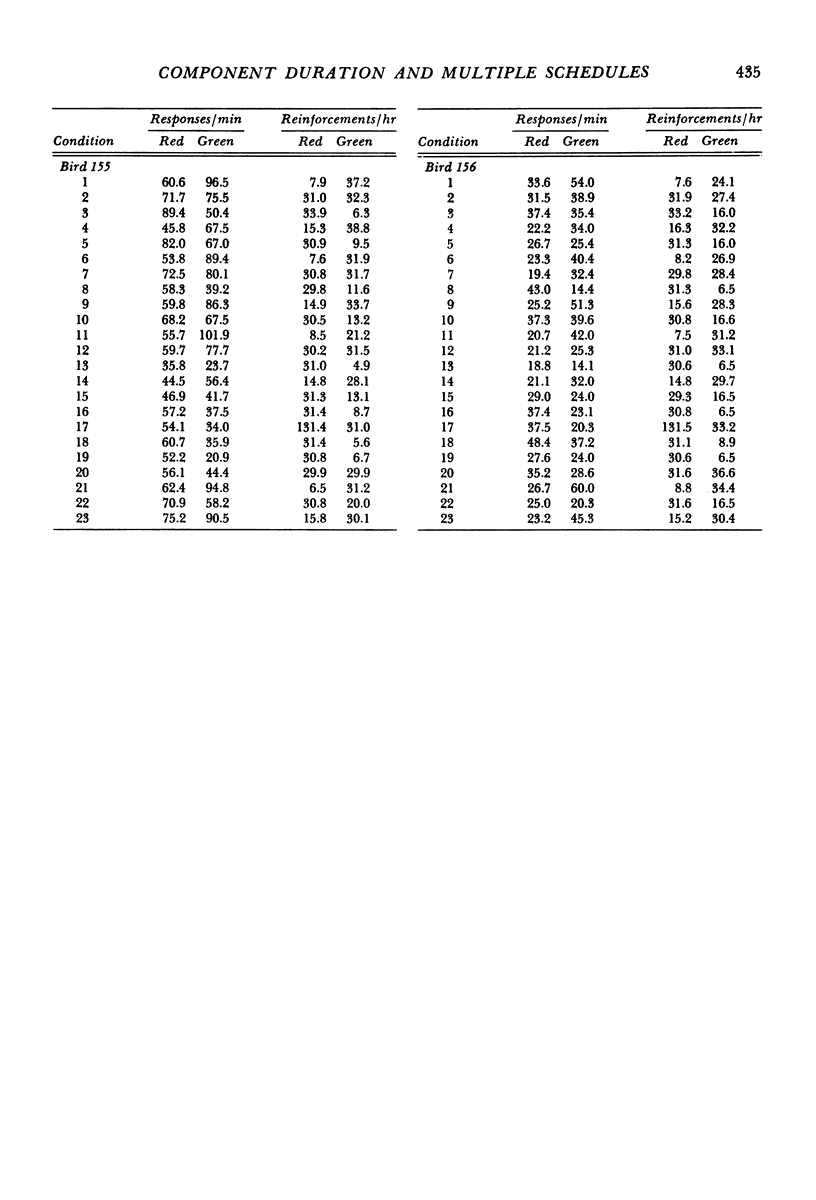


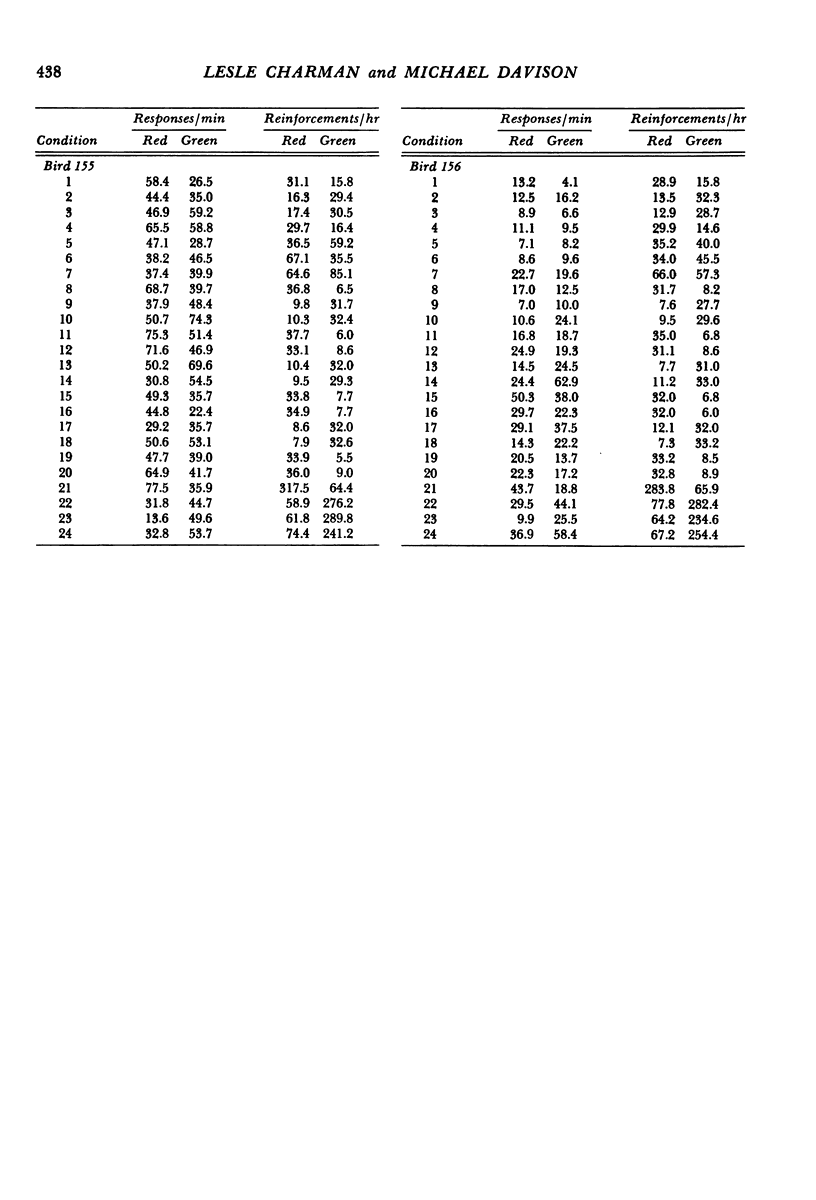
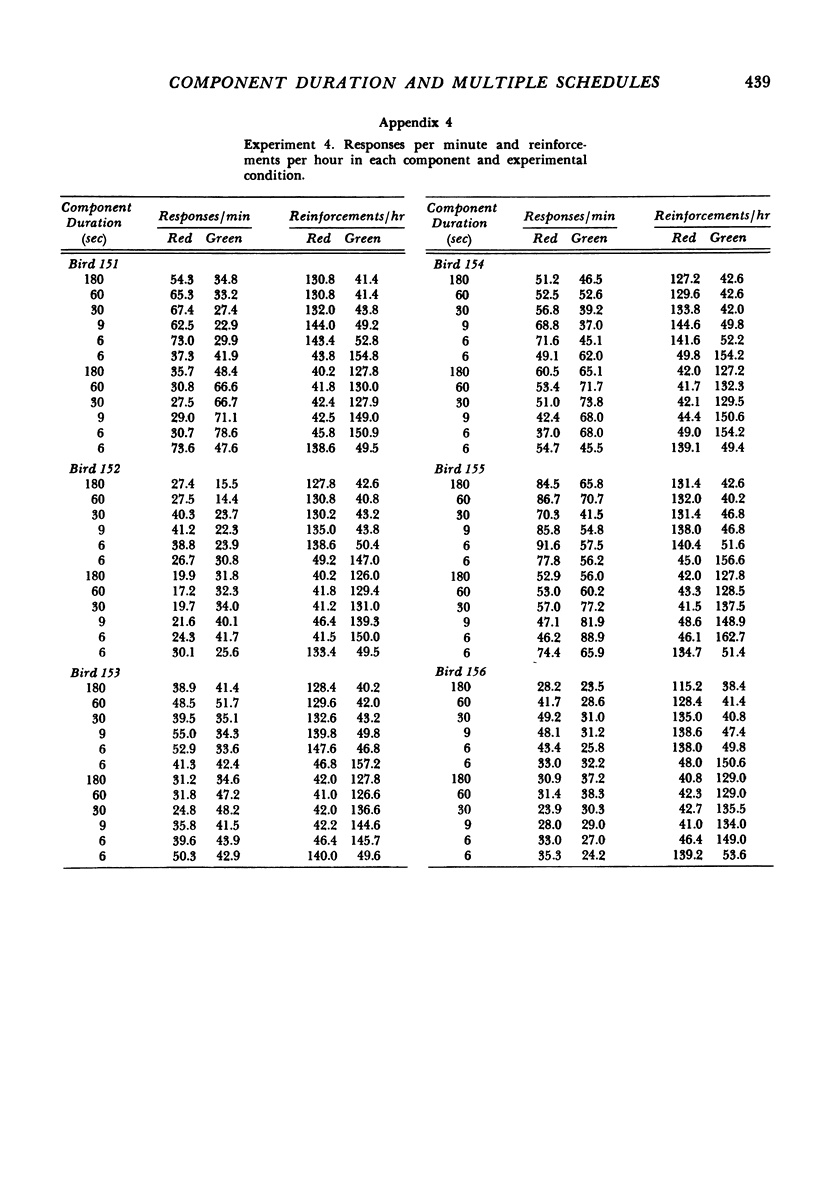
Selected References
These references are in PubMed. This may not be the complete list of references from this article.
- Baum W. M. Matching, undermatching, and overmatching in studies of choice. J Exp Anal Behav. 1979 Sep;32(2):269–281. doi: 10.1901/jeab.1979.32-269. [DOI] [PMC free article] [PubMed] [Google Scholar]
- Baum W. M. On two types of deviation from the matching law: bias and undermatching. J Exp Anal Behav. 1974 Jul;22(1):231–242. doi: 10.1901/jeab.1974.22-231. [DOI] [PMC free article] [PubMed] [Google Scholar]
- Edmon E. L. Multiple schedule component duration: a reanalysis of Shimp and Wheatley (1971) and Todorov (1972). J Exp Anal Behav. 1978 Sep;30(2):239–241. doi: 10.1901/jeab.1978.30-239. [DOI] [PMC free article] [PubMed] [Google Scholar]
- Herrnstein R. J., Loveland D. H. Hunger and contrast in a multiple schedule. J Exp Anal Behav. 1974 May;21(3):511–517. doi: 10.1901/jeab.1974.21-511. [DOI] [PMC free article] [PubMed] [Google Scholar]
- Herrnstein R. J. On the law of effect. J Exp Anal Behav. 1970 Mar;13(2):243–266. doi: 10.1901/jeab.1970.13-243. [DOI] [PMC free article] [PubMed] [Google Scholar]
- Killeen P. A yoked-chamber comparison of concurrent and multiple schedules. J Exp Anal Behav. 1972 Jul;18(1):13–22. doi: 10.1901/jeab.1972.18-13. [DOI] [PMC free article] [PubMed] [Google Scholar]
- Lander D. G., Irwin R. J. Multiple schedules: effects of the distribution of reinforcements between component on the distribution of responses between conponents. J Exp Anal Behav. 1968 Sep;11(5):517–524. doi: 10.1901/jeab.1968.11-517. [DOI] [PMC free article] [PubMed] [Google Scholar]
- Lobb B., Davison M. C. Multiple and concurrent schedule performance: independence from concurrent and successive schedule contexts. J Exp Anal Behav. 1977 Jul;28(1):27–39. doi: 10.1901/jeab.1977.28-27. [DOI] [PMC free article] [PubMed] [Google Scholar]
- Lobb B., Davison M. C. Performance in concurrent interval schedules: a systematic replication. J Exp Anal Behav. 1975 Sep;24(2):191–197. doi: 10.1901/jeab.1975.24-191. [DOI] [PMC free article] [PubMed] [Google Scholar]
- Mariner R. W., Thomas D. R. Reinforcement duration and the peak shift in post-discrimination gradients. J Exp Anal Behav. 1969 Sep;12(5):759–766. doi: 10.1901/jeab.1969.12-759. [DOI] [PMC free article] [PubMed] [Google Scholar]
- McLean A. P., White K. G. Undermatching and contrast within components of multiple schedules. J Exp Anal Behav. 1981 May;35(3):283–291. doi: 10.1901/jeab.1981.35-283. [DOI] [PMC free article] [PubMed] [Google Scholar]
- Merigan W. H., Miller J. S., Gollub L. R. Short-component multiple schedules: effects of relative reinforcement duration. J Exp Anal Behav. 1975 Sep;24(2):183–189. doi: 10.1901/jeab.1975.24-183. [DOI] [PMC free article] [PubMed] [Google Scholar]
- Shimp C. P., Wheatley K. L. Matching to relative reinforcement frequency in multiple schedules with a short component duration. J Exp Anal Behav. 1971 Mar;15(2):205–210. doi: 10.1901/jeab.1971.15-205. [DOI] [PMC free article] [PubMed] [Google Scholar]
- Silberberg A., Schrot J. A yoked-chamber comparison of concurrent and multiple schedules: the relationship between component duration and responding. J Exp Anal Behav. 1974 Jul;22(1):21–30. doi: 10.1901/jeab.1974.22-21. [DOI] [PMC free article] [PubMed] [Google Scholar]
- Todorov J. C. Component duration and relative response rates in multiple schedules. J Exp Anal Behav. 1972 Jan;17(1):45–49. doi: 10.1901/jeab.1972.17-45. [DOI] [PMC free article] [PubMed] [Google Scholar]


